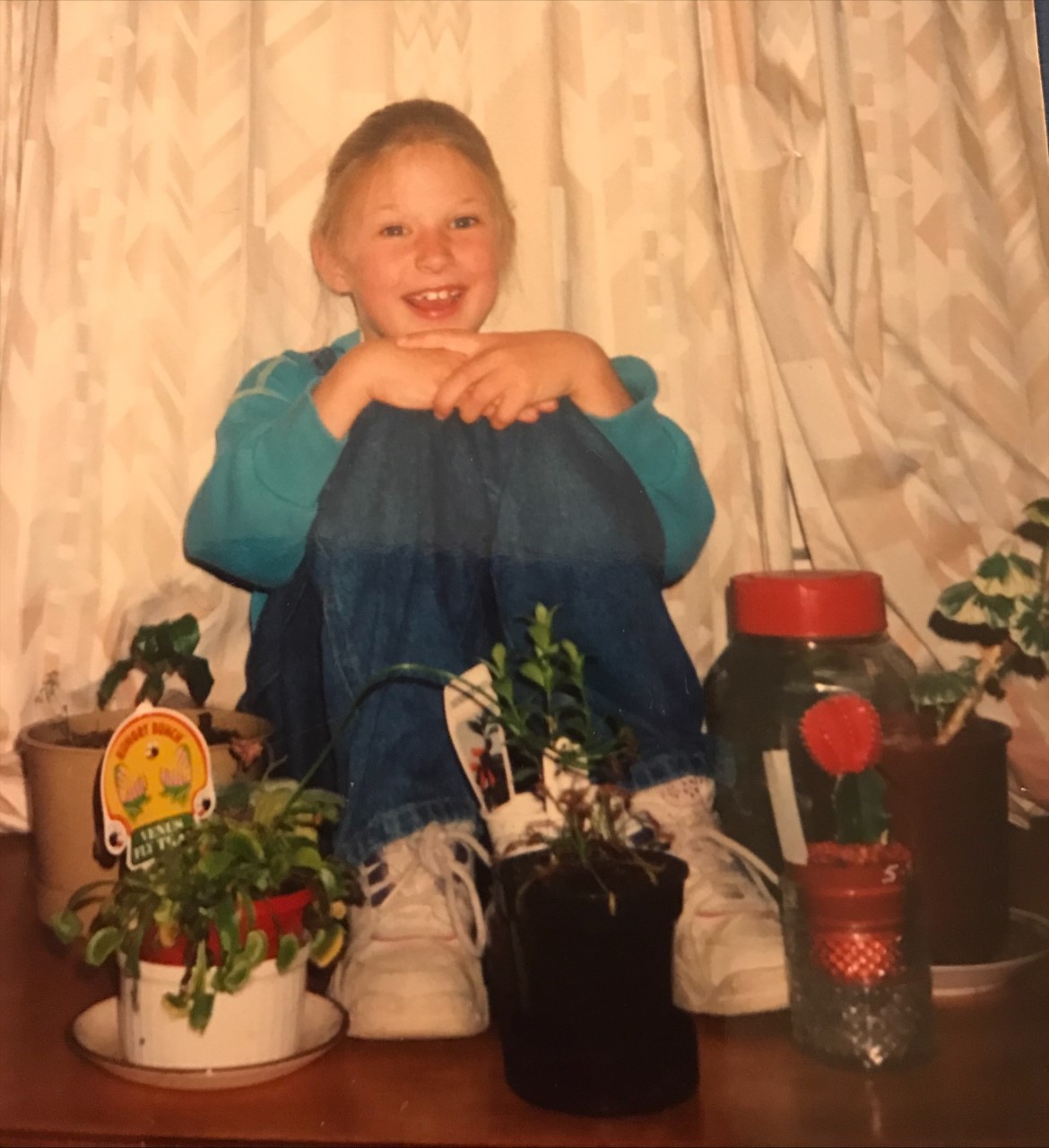
We have a strong female presence at CMBD. As gender balance is one of our strengths, we asked the Ph.D. candidate, Nicole Clark, to share her childhood career aspirations in this blog post.
It’s 1998, I’m 9 years old, it’s school dress-up day, the theme: ‘who you want to be when you grow up’. I went home and told my mother that I didn’t know what to go as, she looked at me and smiled and said ‘I know!’, as she ran out of the room…
My mother returns and is kneeling down, she fastens the buttons to my outfit. She looks down at me and she smiles. I’m wearing one of her white dress shirts which gives off the appearance that I’m wearing a white lab coat. In the background, I can hear [on VHS repeat] David Attenborough’s, Private Life of Plants. In the next room are my carnivorous plants: my Venus flytrap which has grown so large that its flowers and stems stretch across the length of the table, my tiny sundew and my trumpet pitcher plant towering next to it. Next to them is my assortment of cicada shells, various fungi specimens, and beetle wings; next to those, my hermit crabs, my axolotl, my budgies and my tadpoles. A little further and just out the door, my 15 guinea pigs scurry around in their hutch. As my mother gets up to admire our creation, she says, ‘And now for the finishing touches’, she holds out her hand and smiles again – it’s a test tube from the microscope kit I got last Christmas. She places it in my top pocket and says, ‘There you are my girl, now you’re a scientist- my scientist’.
This was the first moment in my life that I realised that being a scientist was a real profession for women. Before this moment I had no concept that any of my interests formed the basis of a real profession for women. My entire concept of science was routed in the fabric that it was a male oriented profession, for every scientist I knew of was a man. But my mother, a strong female in my life, began to re-enforce it didn’t have to be. At 9 years old I thought I was the only girl that liked nature and bugs, catching bugs to feed my many plants, and my hero? None other than Sir David Attenborough. Every weekend, my neurodivergent brain would spend hours collecting specimens and reading about different animals, devouring knowledge with every new specimen I collected. At school I was known as the ‘bug girl’ or the ‘the weird nature girl’ collecting gum nuts and creating hospitals for injured ants. At school I was often called a dreamer, discouraged from my passion, made to feel, by the education system at that time, that my interest in the natural world was to be nothing more than a hobby. As I stood there watching my mum place the test tube into my top pocket, something inside me changed, this was the moment I realised women can be scientists and it was in that exact moment that I started to believe that girls can grow up to be women in science.

